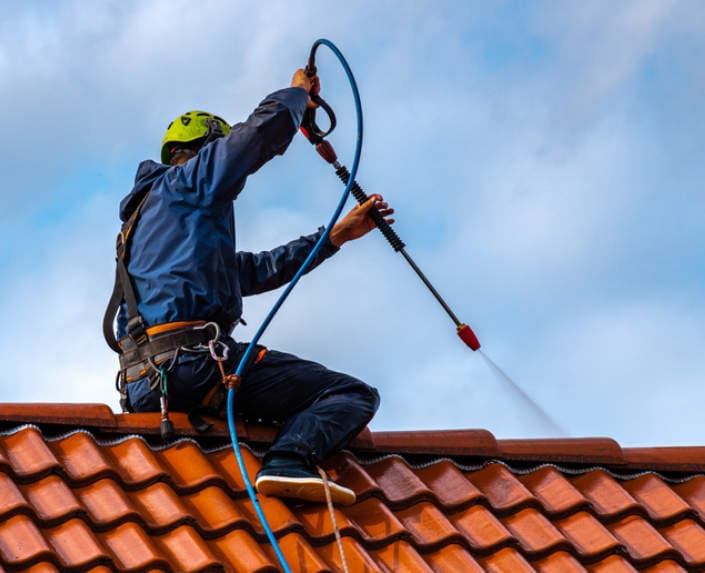Roof cleaning services play a crucial role in maintaining not only the aesthetic appeal and longevity of buildings but also in contributing to better air quality and reduced health risks. The connection between roof cleanliness and air quality may not be immediately obvious, but it is both direct and significant.
Removing Organic Growth
Roofs, especially those in humid or shaded environments, can become breeding grounds for organic growths such as moss, algae, and lichen. These organisms, apart from being unsightly, trap moisture against the roof’s surface, which can lead to the growth of mold and mildew. Mold spores, once airborne, contribute to poor air quality and pose serious health risks. They can cause respiratory problems, trigger allergies, and exacerbate asthma conditions.
Mitigating Airborne Particulates
Roofs can accumulate various types of debris, including dust, dirt, and pollutants carried by the wind. Particulate matter, especially fine particles PM2.5, can penetrate deep into the lungs and even enter the bloodstream, leading to severe health issues such as cardiovascular diseases, respiratory infections, and lung cancer. Roof cleaning services help mitigate this problem by removing accumulated debris, thus reducing the amount of particulate matter that can become airborne.

Reducing Chemical Use
Another aspect of roof cleaning that contributes to better air quality is the reduction in the use of harsh chemicals. Traditional methods of cleaning, such as pressure washing with strong chemical solutions, can release volatile organic compounds VOCs and other harmful substances into the atmosphere. Modern roof cleaning services often employ eco-friendly cleaning solutions that are biodegradable and non-toxic. These environmentally conscious products minimize the release of harmful chemicals, ensuring that air quality is not compromised during the cleaning process.
Energy Efficiency and Pollution Reduction
A clean roof reflects more sunlight and absorbs less heat, making buildings more energy-efficient. When roofs are covered with dirt, algae, or mold, they tend to absorb more heat, which increases the cooling demands of the building. Higher energy consumption not only results in higher utility bills but also increases the output of power plants, many of which burn fossil fuels. This leads to higher emissions of greenhouse gases and pollutants such as sulfur dioxide and nitrogen oxides, which contribute to air pollution and respiratory problems. By maintaining clean roofs, energy efficiency is improved, and the demand for energy is reduced, leading to lower emissions and better air quality.
Preventing Structural Damage
Accumulated debris and organic growth on roofs can lead to structural damage over time. Damaged roofs are more prone to leaks, which can cause water damage inside buildings. This water damage can create a damp environment conducive to mold growth, further contributing to poor indoor air quality. Regular roof cleaning helps prevent such structural damage, thereby maintaining the integrity of the building and preventing conditions that can lead to mold growth and poor indoor air quality.
The roof cleaning stockport services play an important role in enhancing air quality and reducing health risks. By removing organic growths, debris, and potential mold sources, they directly contribute to cleaner air. Regular roof maintenance is not just a matter of aesthetics or property value it is a proactive measure that supports healthier living environments and promotes the well-being of entire communities.
